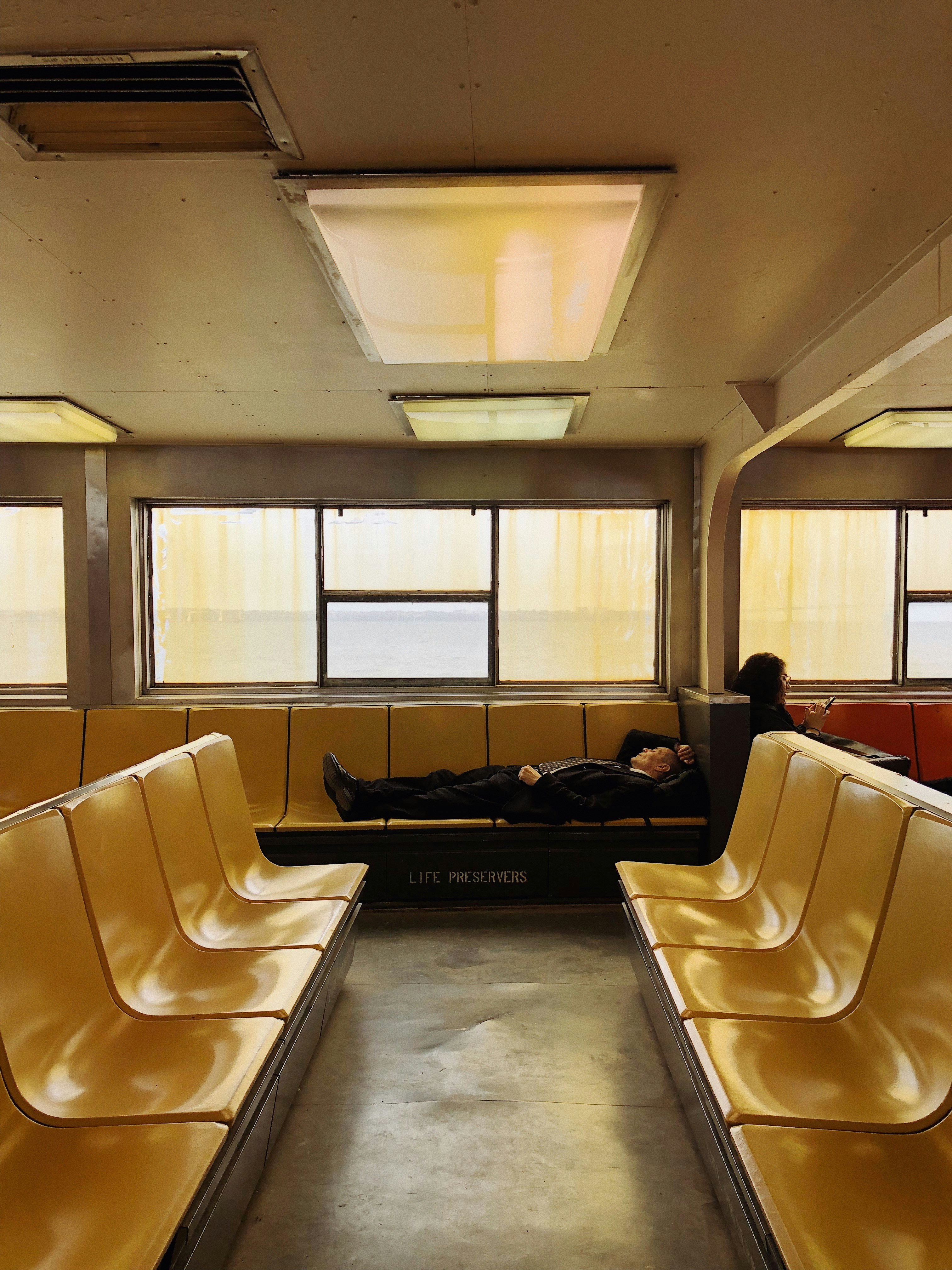Sleep anywhere while traveling is a skill that can transform your adventures — turning exhausting red-eye flights and overnight buses into opportunities for genuine rest. The National Sleep Foundation emphasizes that aligning your sleep patterns with your travel schedule can significantly improve alertness and reduce fatigue upon arrival — helping you start your trip with more energy and focus.
In today’s world of faster, cheaper, and more mobile travel, your ability to rest on the move can mean the difference between stumbling through your itinerary and stepping off your transport refreshed, healthy, and ready to explore.
This guide blends science-backed sleep advice with real-world traveler wisdom, gear recommendations, and destination-specific insights so you can rest well — whether you’re flying, riding, sailing, or even camping out in an airport.
Why Learning to Sleep in Transit is Essential
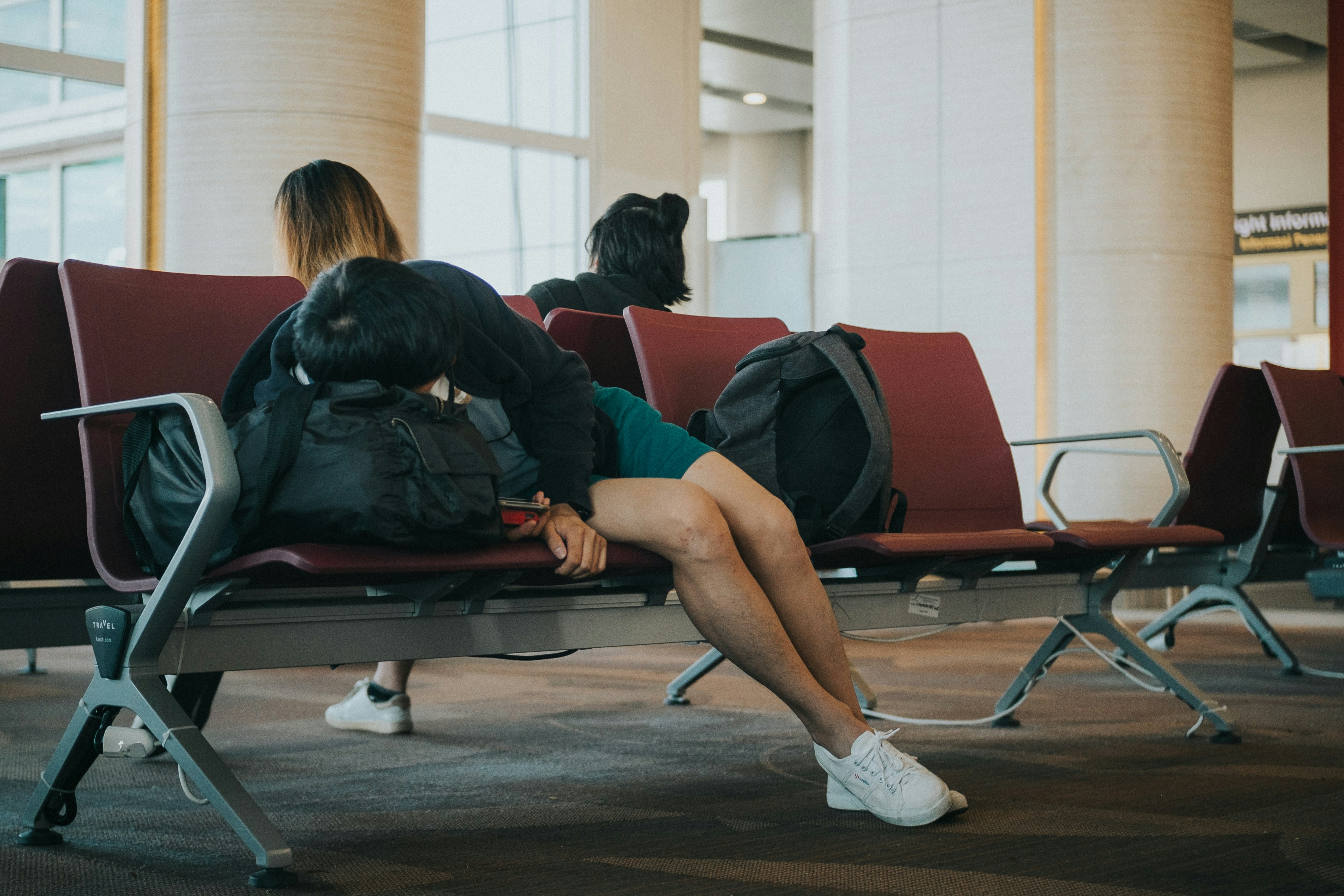
Getting rest during transit is not just about comfort — it’s about maximizing your travel experience:
-
Maximize your travel time – Sleeping while in motion frees up valuable hours for sightseeing or activities upon arrival.
-
Save money on accommodation – An overnight bus or train can serve as both transport and lodging.
-
Reduce jet lag – Strategic naps and aligned sleep schedules help your body adapt faster to new time zones.
-
Protect your health – Sleep is critical for immune system function, mental clarity, and mood stability.
Travelers who build sleep into their transit strategy are more likely to enjoy their first 48 hours in a destination without the fog of fatigue.
The Science of Travel Sleep: Circadian Rhythm, Jet Lag, and In-Transit Rest

Your circadian rhythm — the body’s internal 24-hour clock — regulates when you feel alert or sleepy. When you travel, especially across multiple time zones, this clock can become misaligned with your destination’s local time, creating what’s known as jet lag.
According to the U.S. Centers for Disease Control and Prevention (CDC), symptoms of jet lag can include fatigue, insomnia, irritability, poor concentration, and even digestive upset. How severe these symptoms become depends on the number of time zones crossed and the direction of travel:
-
Flying east: Requires advancing your sleep schedule, which is harder for most people. Expect stronger jet lag symptoms.
-
Flying west: Involves delaying your bedtime, which is typically easier to adjust to.
-
Adjustment time: Sleep researchers from Harvard Medical School estimate it takes about one day per time zone to fully adapt — though strategic light exposure and controlled naps can shorten this period.
Practical Steps to Minimize Jet Lag
-
Pre-trip adjustment: Begin shifting your sleep and meal times toward your destination schedule 2–3 days before departure.
-
Light exposure: Use morning sunlight to advance your clock (for eastward travel) or evening light to delay it (for westward travel).
-
Nap timing: Keep in-transit naps under 90 minutes to avoid deep-sleep grogginess unless you can get a full sleep cycle in.
Sleep Aids: Use with Care
Some travelers turn to supplements or medications for in-transit sleep, but these should be approached cautiously:
-
Melatonin: Effective for resetting circadian rhythm when taken at the correct local bedtime, but may cause grogginess or vivid dreams if misused.
-
Magnesium: Can promote relaxation, but high doses may cause digestive upset.
-
Prescription sleep aids: Should only be used under medical supervision due to possible dependency or side effects.
-
Local regulations: Some countries restrict or ban certain supplements, so always check before packing them.
Dr. Michael Breus, a clinical psychologist specializing in sleep medicine, notes that “the key is not simply to sleep more, but to sleep in sync with your destination’s time zone as quickly as possible.”
Packing Your Ultimate Travel Sleep Kit
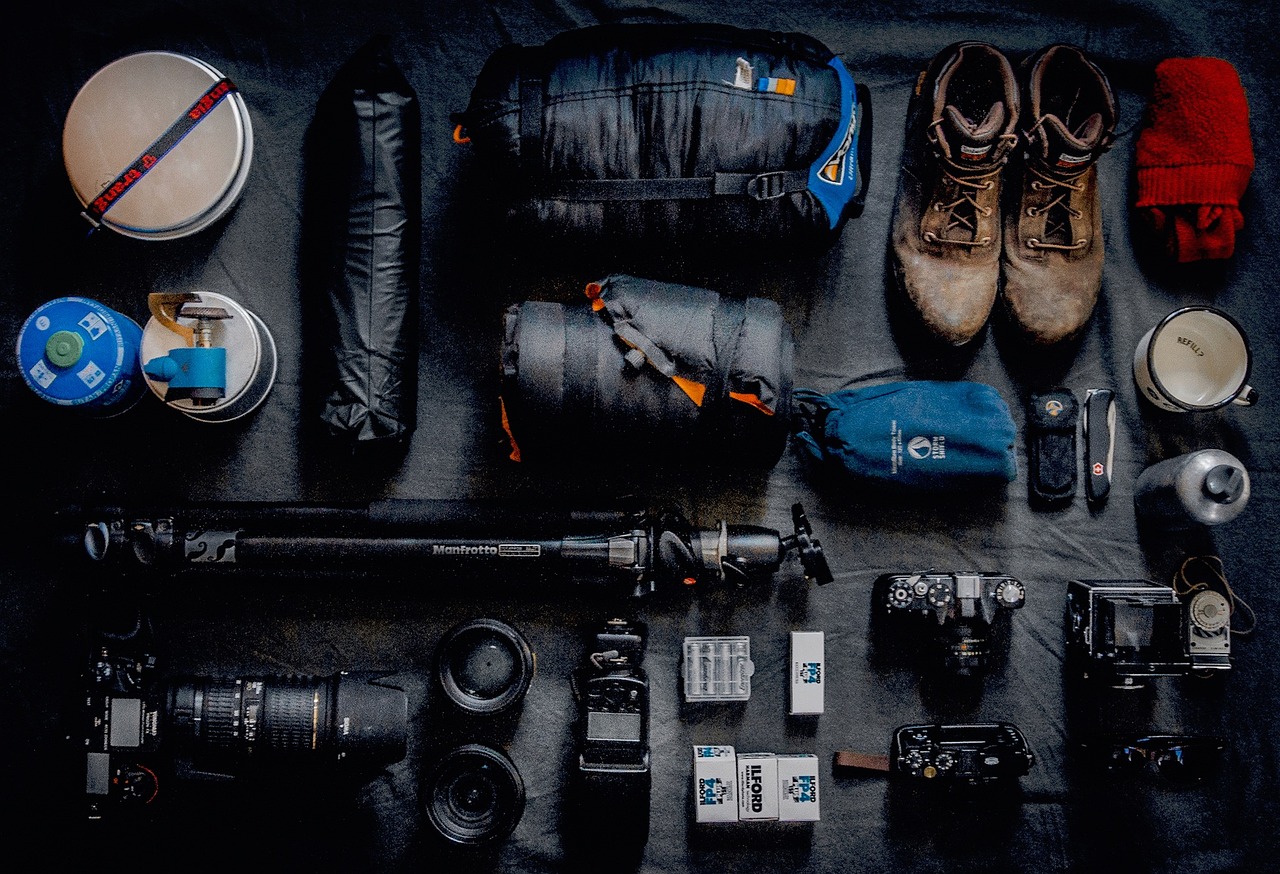
The difference between a restless journey and a surprisingly restorative one often comes down to preparation. A well-chosen travel sleep kit helps you control light, noise, temperature, and body position — all critical for falling asleep in motion.
Experts in travel ergonomics emphasize that our bodies sleep best when spinal alignment, temperature, and sensory input are regulated. Since transit rarely offers ideal conditions, small, lightweight tools can make a big difference.
Here’s what to include and why it matters:
-
Travel Pillow – Supports the neck to prevent strain and maintain an open airway, reducing micro-awakenings. Memory foam or structured designs such as the Cabeau Evolution S3 or Trtl Pillow offer far better support than basic U-shaped inflatables.
-
Eye Mask – Blocks light that can suppress melatonin production. A total blackout style like the Manta Sleep Mask ensures your sleep cycle is not interrupted by cabin lights or early sunrises.
-
Earplugs or Noise-Canceling Earbuds – Reduce environmental noise and help lower your heart rate so you can reach deeper sleep stages. Mack’s Ultra Soft Foam earplugs are inexpensive and comfortable, while high-end options like Sony WF-1000XM5 earbuds combine noise cancellation with the ability to play white noise or calming soundscapes.
-
Compression Socks – Improve circulation and reduce swelling during long periods of sitting, especially on long-haul flights. Options like Sockwell Elevation socks are comfortable and breathable while offering medical-grade compression.
-
Light Blanket or Oversized Scarf – Regulates body temperature. Lightweight merino wool scarves, such as those from Icebreaker, insulate while remaining breathable and can double as a wrap or makeshift pillow.
-
Optional Sleep Aids – Melatonin or magnesium can help align your body clock and promote relaxation, but use them with care. Check local laws before traveling with supplements, and be mindful of possible side effects such as grogginess or digestive upset.
Packing even half of these items can dramatically improve your chances of sleeping well in motion — and they can all fit neatly into a carry-on or daypack.
Sleep Strategies by Transport Mode
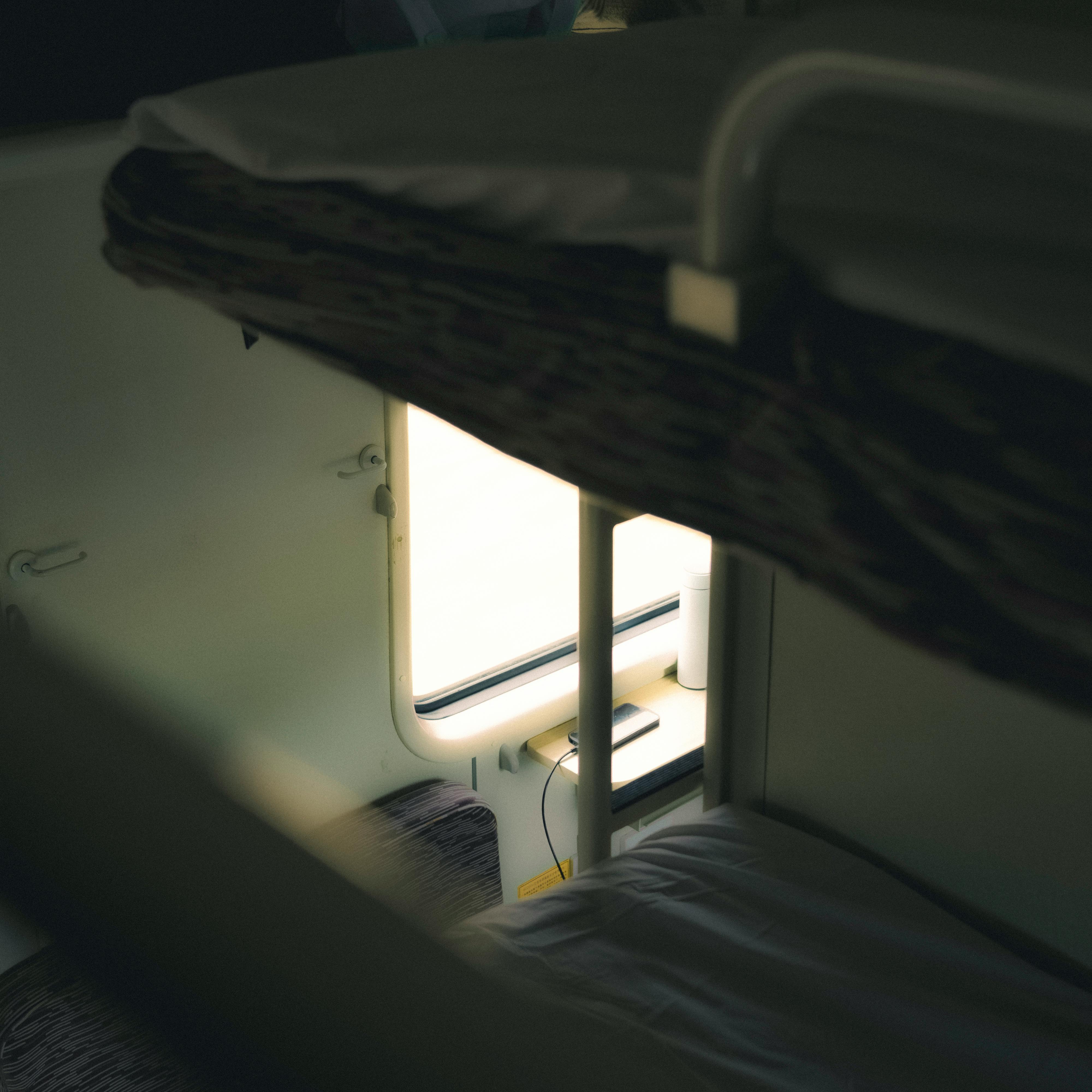
Sleeping in motion is not a one-size-fits-all challenge — the strategies that work on a quiet night train through Austria might fail miserably on a crowded overnight bus in South America. Below are tailored tips for each mode of transport, backed by traveler experience and a little sleep science.
Flights
Air travel is one of the most challenging environments for rest: dry air, cramped seating, and unpredictable light and noise. The low humidity in cabins — sometimes as little as 10% — can dehydrate you faster, which disrupts sleep quality.
Best practices for sleeping on planes:
-
Choose your seat carefully – Window seats let you lean against the wall and avoid being disturbed by aisle traffic. Avoid seats near restrooms or galleys where noise is constant.
-
Regulate temperature – Airplane cabins can become cold during cruising altitude. Wearing a hoodie or packing a light scarf or blanket helps keep your core warm, which signals your body it’s safe to sleep.
-
Use airline amenities – On long-haul flights, politely ask the crew for extra pillows or blankets. They often have spares.
-
Control light and sound – A blackout eye mask and noise-canceling earbuds can help simulate a quiet bedroom environment even at 35,000 feet.
-
Plan your rest – If crossing time zones, try to sleep during the destination’s night hours, even if it means adjusting before your trip.
Example: On Singapore Airlines’ overnight Singapore–London route, many travelers set their watches to UK time before boarding and sleep immediately after dinner service to help sync with their destination.
Trains
Trains often provide a more rhythmic, less turbulent environment than planes or buses, but light, noise, and occasional station stops can still be disruptive.
Best practices for sleeping on trains:
-
Book sleeper options early – In regions like Eastern Europe, couchettes and private cabins are often more affordable than you’d expect. Routes such as Berlin–Vienna and Lisbon–Madrid are popular for overnight travel.
-
Position for comfort – If you don’t have a sleeper berth, recline just enough to avoid neck strain. Use your travel pillow between the seat and window for extra cushioning.
-
Secure your belongings – Keep valuables in a money belt or under your pillow. In shared compartments, place your bag where you can feel it.
-
Move during stops – Use station layovers to stretch and get fresh air, which helps circulation and can make returning to sleep easier.
Example: In Japan, the Sunrise Seto and Sunrise Izumo overnight trains offer private single compartments — a rarity in most countries — making them some of the most comfortable options for in-transit rest.
Buses
Long-distance buses can be economical but come with unique challenges: tighter legroom, frequent stops, and more variable road noise. The constant vibration and upright seating can also make deep sleep harder to achieve.
Best practices for sleeping on buses:
-
Pick the right seat – The middle section, away from the wheels and engine, offers the smoothest ride. Window seats allow for leaning, but bring a pillow to avoid neck strain.
-
Create your own cocoon – Combine a neck pillow with a hoodie or scarf pulled up over your head to block light and drafts.
-
Snack lightly – Large meals before boarding can cause indigestion, especially if you’re seated upright for hours.
-
Dress in layers – Bus temperatures can swing between uncomfortably warm and overly cold depending on the driver and climate.
Example: In South America, Cruz del Sur buses in Peru are renowned for their fully reclining seats and provided blankets, making them a favorite for travelers on overnight routes like Lima–Arequipa.
Ferries
Overnight ferries can be a surprisingly restful option — if you plan ahead. Many travelers underestimate how cold and noisy ferry lounges can get, especially on budget routes.
Best practices for sleeping on ferries:
-
Book a cabin if possible – Even the most basic private cabins offer a flat surface and privacy. On longer crossings such as Italy–Greece, this can make a huge difference.
-
Come prepared for budget seating – If you opt for deck space or reclining chairs, bring a sleeping pad or thick blanket to create a more comfortable surface.
-
Stay warm – Sea air and air conditioning can make lounges chilly at night. Wear or pack extra layers.
-
Set an alarm – Ferry disembarkation calls can be easy to miss if you’re in deep sleep.
Example: The Helsinki–Stockholm overnight ferry offers both budget “deck passenger” tickets and luxury cabins, allowing travelers to choose between low-cost rest and high-comfort sleep.
Airports, Stations & Layovers: Sleeping in Public Spaces
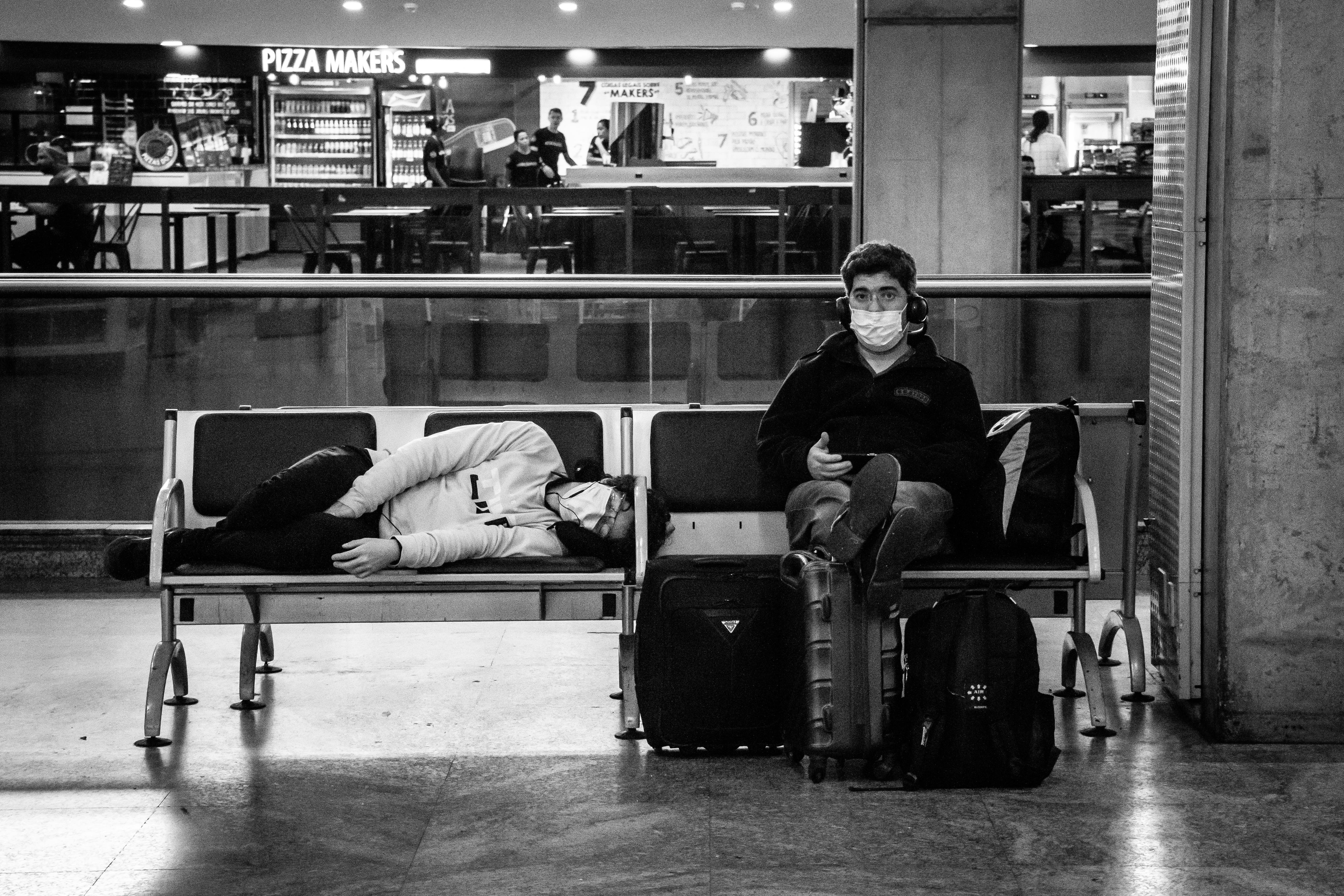
Sometimes a long layover, missed connection, or early-morning departure means you have no choice but to rest in a public space. While sleeping in airports and stations isn’t always glamorous, it can be done safely and comfortably with the right approach.
Plan Ahead When Possible
Before your trip, research your transit hub using resources like SleepingInAirports.net. Many airports and large train stations have detailed online reviews highlighting:
-
Best sleeping spots (quiet corners, low-traffic gates, unused lounges)
-
Available amenities (charging stations, showers, free Wi-Fi)
-
Security presence and overall safety
Airports like Singapore Changi, Doha Hamad International, and Helsinki-Vantaa consistently rank among the most sleep-friendly thanks to designated rest zones, reclining chairs, and even free movie theaters.
Safety First
If you’re going to sleep in a public space, personal security should be your top priority.
-
Stay visible but not isolated – Position yourself near other travelers or in well-lit areas with security cameras.
-
Secure your belongings – Loop backpack straps around your arm or leg, use a small luggage lock, or keep valuables in a money belt under your clothing.
-
Avoid deep isolation – Hidden corners can seem appealing, but they may be less safe than areas with light foot traffic and visibility.
For solo travelers, sleeping close to staffed desks or information counters can provide extra peace of mind.
Create a Private Bubble
Even in a bustling terminal, you can carve out a small sense of privacy:
-
Use your scarf or hoodie to create a visual barrier between you and foot traffic.
-
Face away from open walkways so passing movement is less distracting.
-
Consider a lightweight pop-up sleep pod tent (permitted in some airports) for extra privacy and darkness.
Upgrade Without Breaking the Budget
Airport lounges aren’t just for business-class passengers. Many offer day passes for as little as $25–$50, giving you access to:
-
Quiet, semi-private seating
-
Free food and drinks
-
Showers for freshening up before your next leg
-
Secure environments with monitored entry
If you’re in a train station, check if it has a first-class lounge (often available for a small fee even if you’re not a first-class ticket holder).
Example: Munich Airport’s NapCabs — private, rentable sleeping pods — provide a bed, small desk, charging outlets, and controlled lighting, offering an ideal rest solution during long layovers.
Apps That Help You Sleep Smarter
Technology can be a traveler’s best friend when it comes to in-transit rest. These apps help manage jet lag, block out noise, and create calming conditions for sleep — even in chaotic environments.
-
Timeshifter – Built specifically for combating jet lag, Timeshifter creates a personalized schedule for light exposure, caffeine intake, and naps based on your flight details. Perfect for travelers crossing multiple time zones who want to adjust quickly.
-
Calm – Known for its guided meditations and “Sleep Stories,” Calm can help reduce pre-sleep anxiety in noisy or unfamiliar surroundings.
-
Headspace – Offers short, focused breathing exercises and sleep meditations designed to relax your nervous system before rest.
-
Rain Rain Sleep Sounds – Generates customizable background noise, from ocean waves to light rain, masking unpredictable transit sounds.
-
Pzizz – Combines music, voice, and sound effects for both power naps and full night’s rest. Particularly useful for bus or train journeys where you can’t fully recline.
Pro Tip: Download these apps and any soundtracks you plan to use before you travel. Relying on in-transit Wi-Fi can be risky, especially on long-haul flights or ferries.
Hydration, Nutrition & Timing: Overlooked but Crucial
The physical demands of travel — changes in altitude, cabin pressure, and extended periods of sitting — can all impact how well you sleep. Managing hydration, diet, and rest timing can make a noticeable difference.
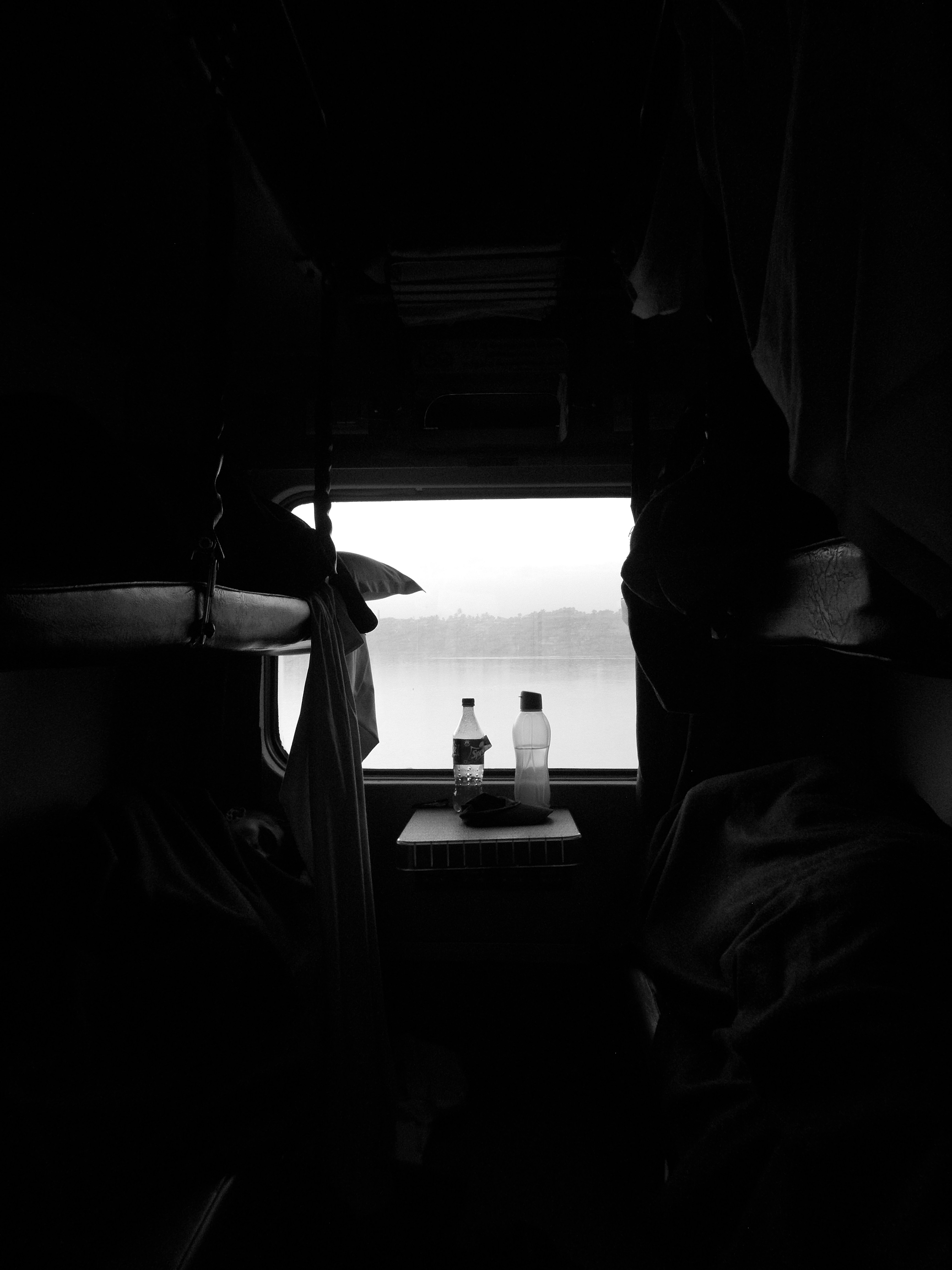
Hydration
Airplane cabins and air-conditioned buses often have humidity levels as low as 10–20%, which can dry out your throat, eyes, and skin. This dehydration not only makes you uncomfortable but can also interfere with your ability to reach deep sleep stages.
-
Aim to sip water regularly instead of drinking large amounts at once.
-
Avoid excessive caffeine or alcohol, both of which contribute to dehydration.
-
If you’re prone to dry eyes, pack lubricating eye drops for overnight flights.
Nutrition
What you eat before and during transit directly affects sleep quality. Heavy, greasy meals can cause discomfort or indigestion, while sugar spikes can disrupt your ability to fall asleep.
-
Light meals before boarding – Opt for something protein-rich and easy to digest, such as grilled chicken, quinoa, or a simple salad.
-
Snack smart – Nuts, bananas, and whole-grain crackers provide steady energy without spiking blood sugar.
-
Avoid excessive salt – It can contribute to bloating and dehydration, particularly during flights.

Timing Your Sleep
One of the most effective ways to fight jet lag is to sync your in-transit sleep with your destination’s night hours.
-
Shift your schedule early – Start adjusting bedtime and wake-up times 2–3 days before departure.
-
Use naps strategically – Short naps (20–30 minutes) help reduce fatigue without making it harder to fall asleep later.
-
Think in cycles – If you can sleep for 90 minutes or a multiple thereof, you’re more likely to wake up feeling refreshed.
Example: On a westbound Los Angeles–Tokyo flight, a traveler aiming to adjust to Japan Standard Time might avoid sleeping in the first half of the flight and instead nap in the second half, aligning with Japan’s early morning hours.
What to Avoid for Better Rest in Transit
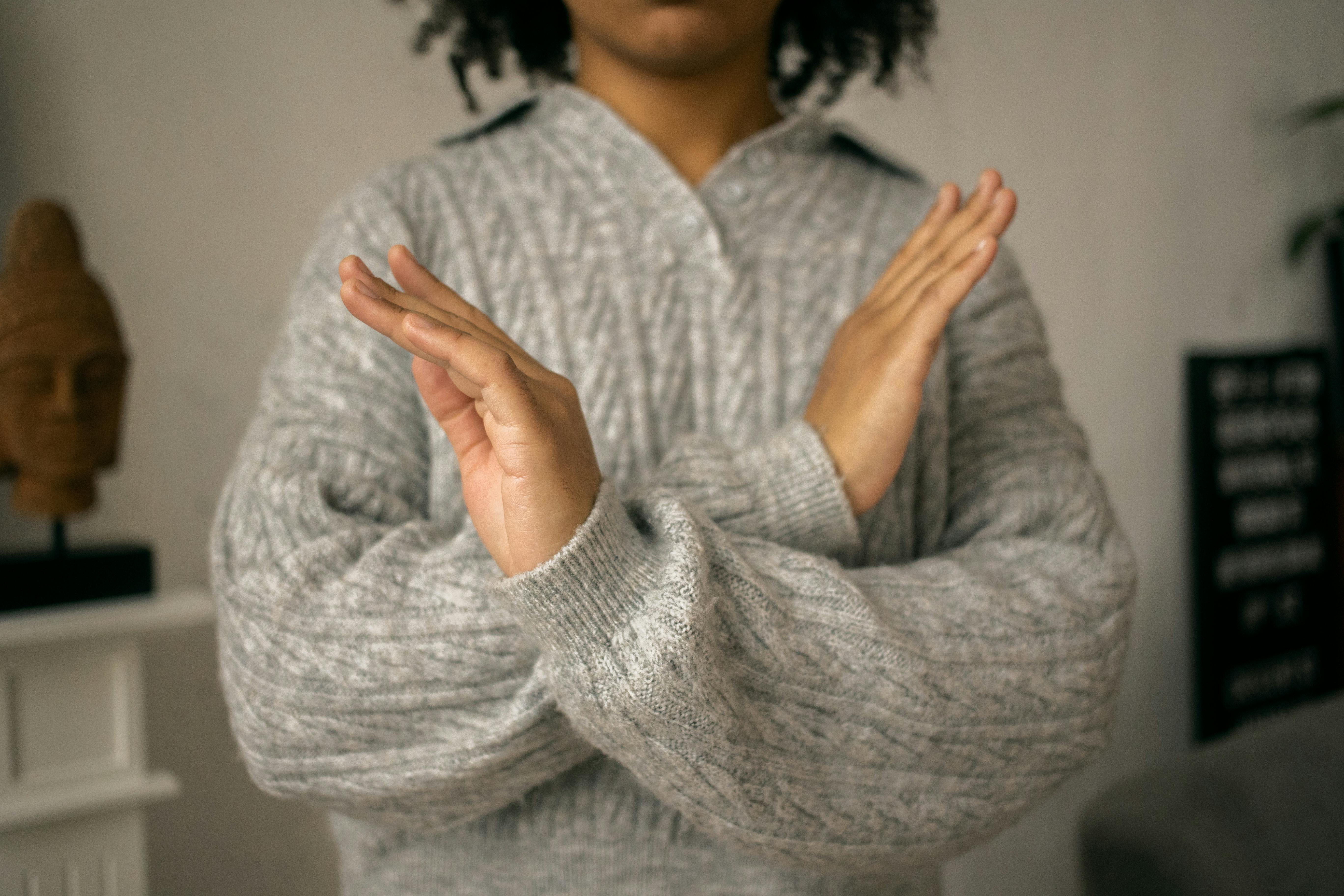
Knowing how to create a comfortable environment is important — but avoiding common mistakes can be just as impactful for in-transit sleep quality.
Alcohol before or during travel
While it may help you doze off initially, alcohol disrupts the REM stage of sleep, leaving you groggy and dehydrated. On long flights, it can also increase the risk of deep vein thrombosis (DVT) due to dehydration and reduced movement.
Sleeping flat on hard airport chairs
Lying completely flat on unpadded surfaces can lead to stiffness, sore joints, and poor circulation. If you must rest in an airport, aim for a semi-reclined position with support for your neck and lower back.
Loud music or continuous headphone use overnight
Extended headphone use at higher volumes can damage hearing and may cause discomfort if you sleep on your side. If you use headphones for noise masking, keep the volume low and set a timer so they turn off automatically.
Poor neck support
The “head bob” from unsupported sleep not only disturbs your rest but can cause muscle strain that lasts for days. Use a structured travel pillow or scarf wrapped around your neck for stability.
Country-Specific Sleep-Friendly Transit Examples
Not all transit systems are created equal. Some countries excel at providing comfortable, safe, and even luxurious sleeping arrangements during travel.
Japan – Known for spotless, safe train stations where napping is culturally acceptable. Overnight “Sunrise” trains offer private compartments, and capsule hotels near major stations provide budget-friendly rest options.
Scandinavia – Comfortable sleeper trains connect cities like Stockholm and Narvik, and ferry routes such as Copenhagen–Oslo feature modern cabins with private bathrooms.
Germany & Austria – Extensive night train networks with clean, affordable couchettes and sleeper cabins. Vienna International Airport offers designated quiet zones and reclining chairs for layover naps.
Portugal & Spain – Relaxed overnight ferry and train schedules, including Lisbon–Madrid sleeper services and Balearic ferry routes, make it easy to combine travel with a good night’s sleep.
Example: On the Helsinki–Stockholm ferry, even budget “deck passenger” tickets allow you to sleep in clean, quiet lounges — while mid-range cabins offer a true bed and private bathroom, making them a favorite among Scandinavia-bound travelers.
FAQs: Sleep Anywhere While Traveling
Q: How can I adjust to a new time zone faster while traveling?
Start shifting your sleep and wake times 2–3 days before departure. Use morning or evening light strategically depending on travel direction, and consider melatonin under the guidance of a healthcare provider.
Q: Is it safe to sleep in airports or train stations?
Yes, in many major hubs — especially in countries with strong public safety records — but choose visible, well-lit areas near other travelers or security staff. Keep your belongings secured and avoid isolated corners.
Q: What’s the best budget-friendly travel pillow?
Many travelers recommend the Trtl Pillow for its lightweight design and effective neck support. It packs flat and is often easier to carry than bulky memory foam models.
Q: How do I prevent neck pain when sleeping upright?
Use a structured travel pillow that supports the chin and sides of your neck. Adjust your seat’s recline to a comfortable angle and avoid tilting your head forward sharply.
Q: Can I rely on over-the-counter sleep aids for travel?
Occasional use can help, but always check dosage instructions, be aware of possible grogginess upon waking, and confirm the legality of the supplement in your destination country.
Arrive Rested, Travel Better
Mastering how to sleep anywhere while traveling isn’t just a comfort upgrade — it’s a travel game-changer. It can mean arriving ready to explore instead of spending your first day in recovery mode.
By combining smart planning, science-backed strategies, and practical gear, you can turn almost any seat — from the back row of a budget bus to a ferry lounge — into a personal sleep zone.
The real reward isn’t just the extra hours of rest; it’s stepping into a new city, island, or mountain town with energy to spare and a clear mind for making memories. In the end, the best travel stories come not just from where you go, but from how fully you can enjoy it when you get there — well-rested, healthy, and ready for adventure.
Final Words
If you found this guide on how to sleep anywhere while traveling helpful, there’s so much more waiting for you on our site. From mastering long-haul flights to uncovering hidden gems around the world, we share practical tips, destination guides, and insider advice to make every journey smoother, richer, and more memorable.
Whether you’re planning your first big trip or you’re a seasoned traveler looking to level up your adventures, explore more of our travel stories, resources, and guides — and let’s make every mile count together.
Further Reading & Sources
-
National Sleep Foundation – Travel and Sleep
https://www.sleepfoundation.org/travel-and-sleep
Overview of how travel can disrupt sleep patterns and practical steps to improve rest in transit. -
National Sleep Foundation – Jet Lag Guide
https://www.sleepfoundation.org/travel-and-sleep/jet-lag
Detailed explanation of jet lag symptoms, causes, and evidence-based strategies for prevention. -
CDC – Jet Lag
https://wwwnc.cdc.gov/travel/page/jet-lag
Health guidance on managing jet lag, including how direction of travel affects recovery time. -
National Sleep Foundation – Sleep Awareness Week
https://www.thensf.org/sleep-awareness-week/
Insights into the role of quality sleep in boosting energy, mood, and immune function.

